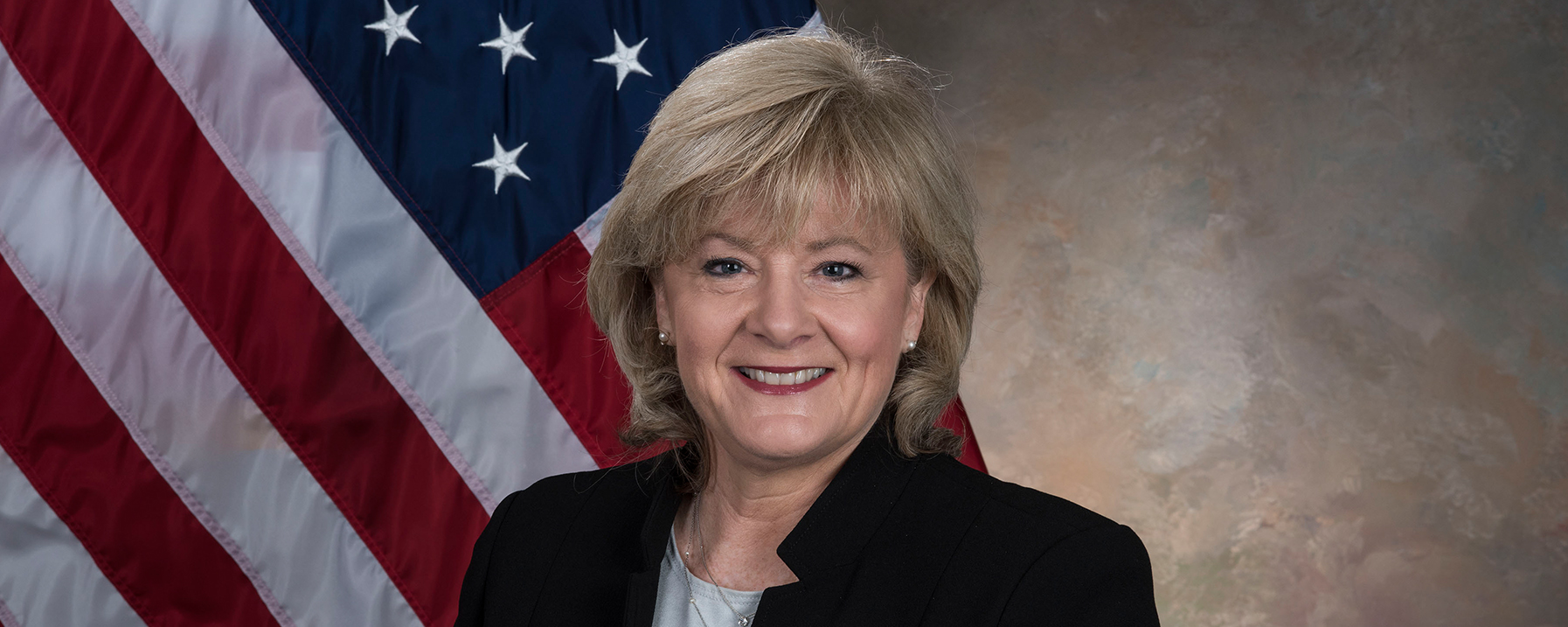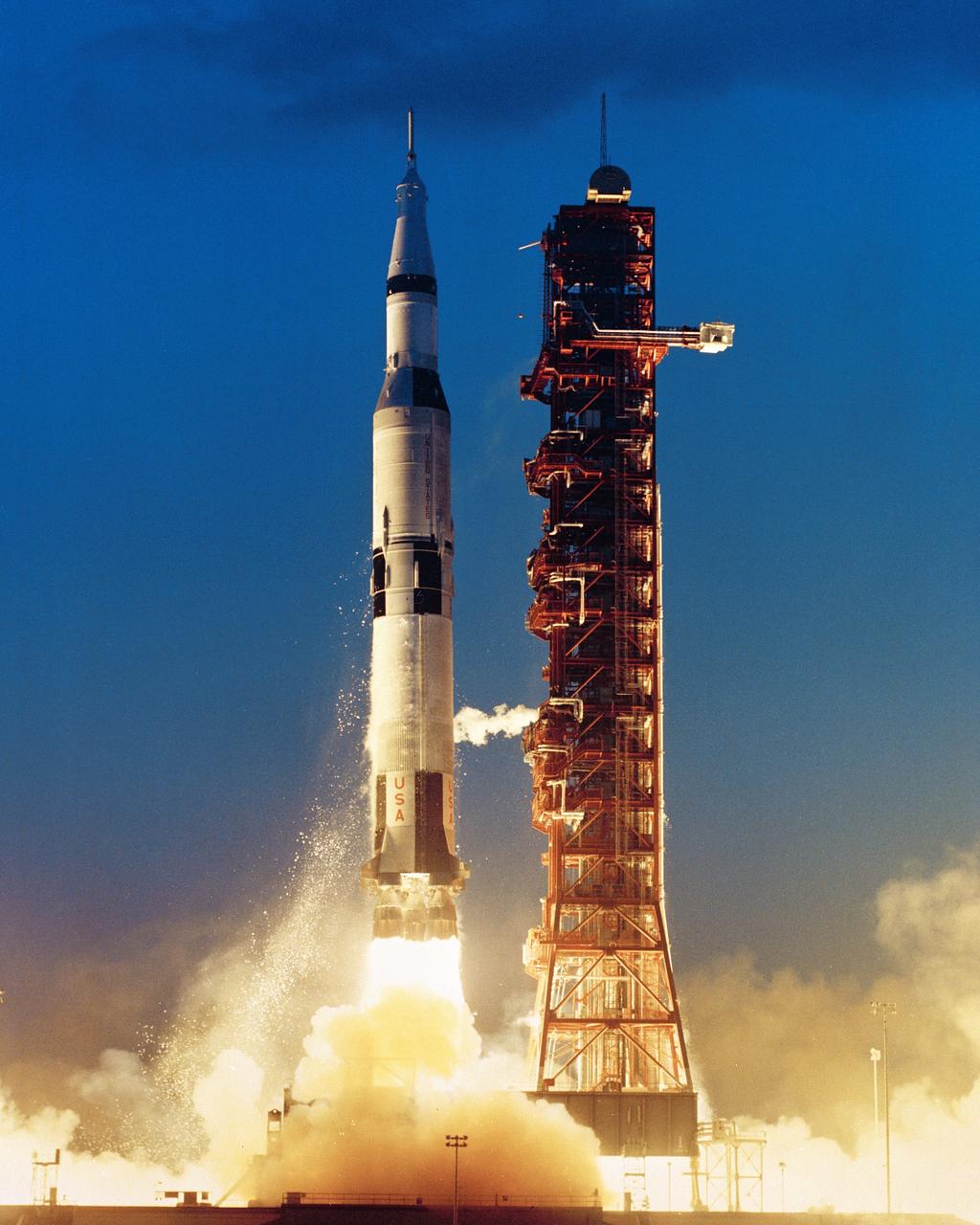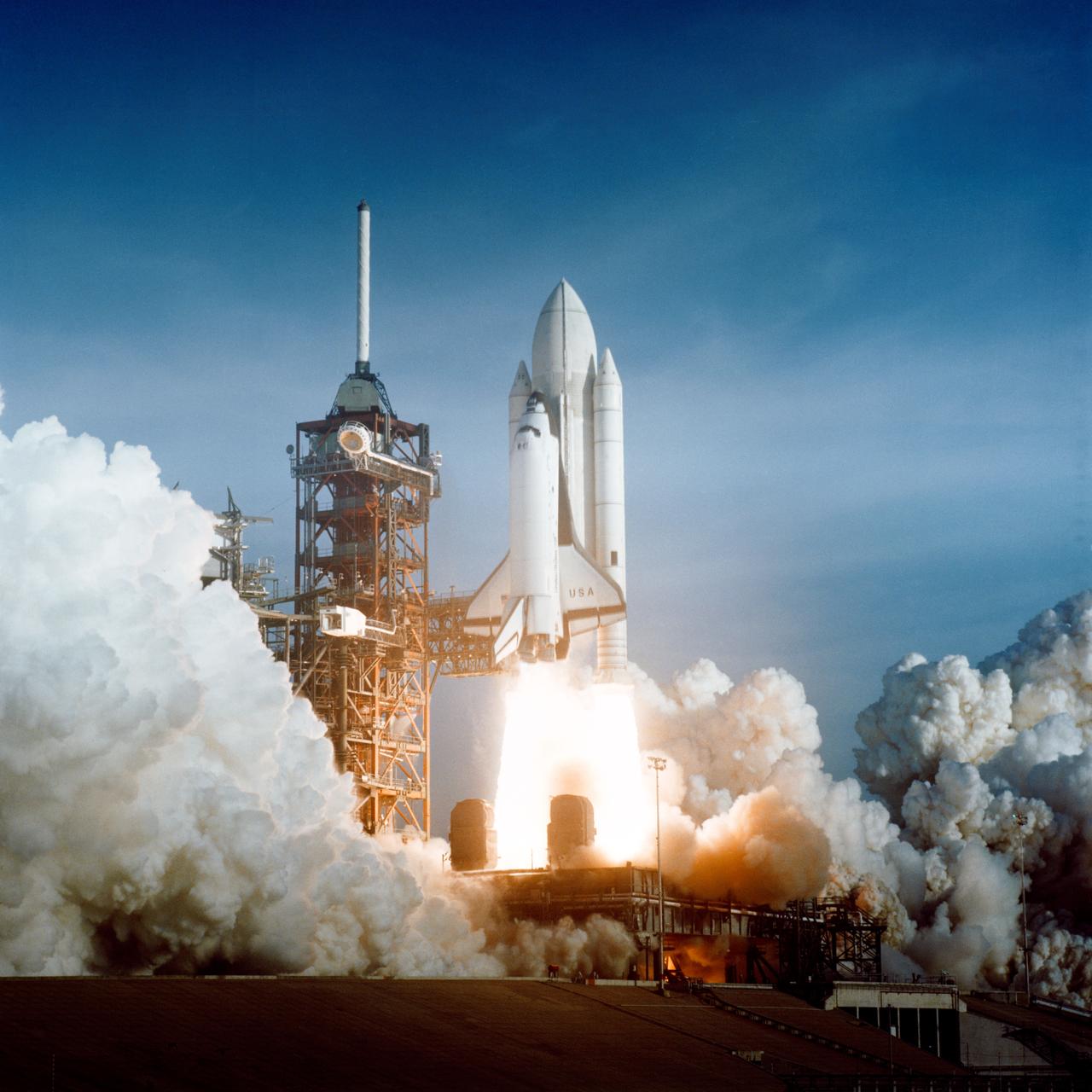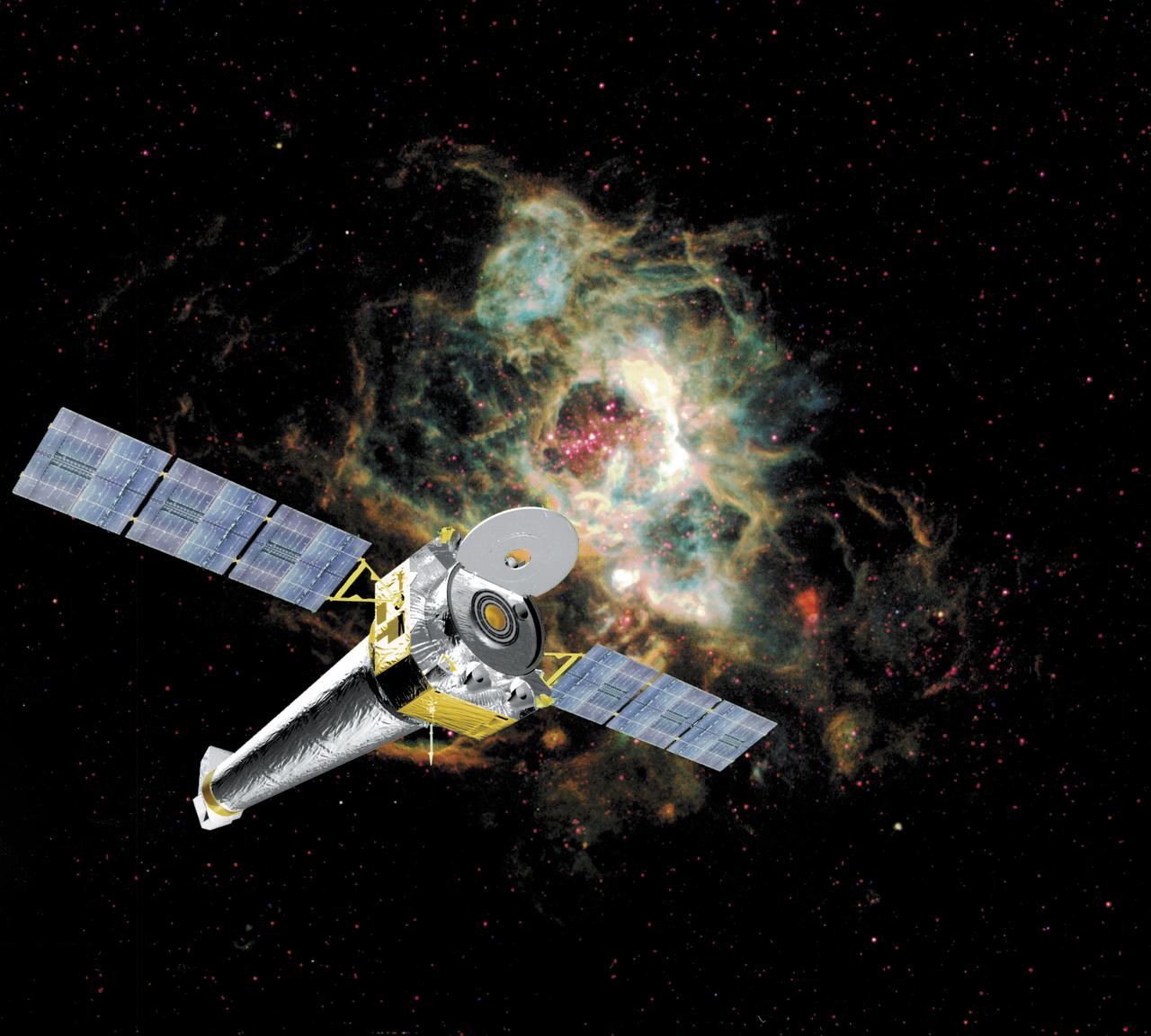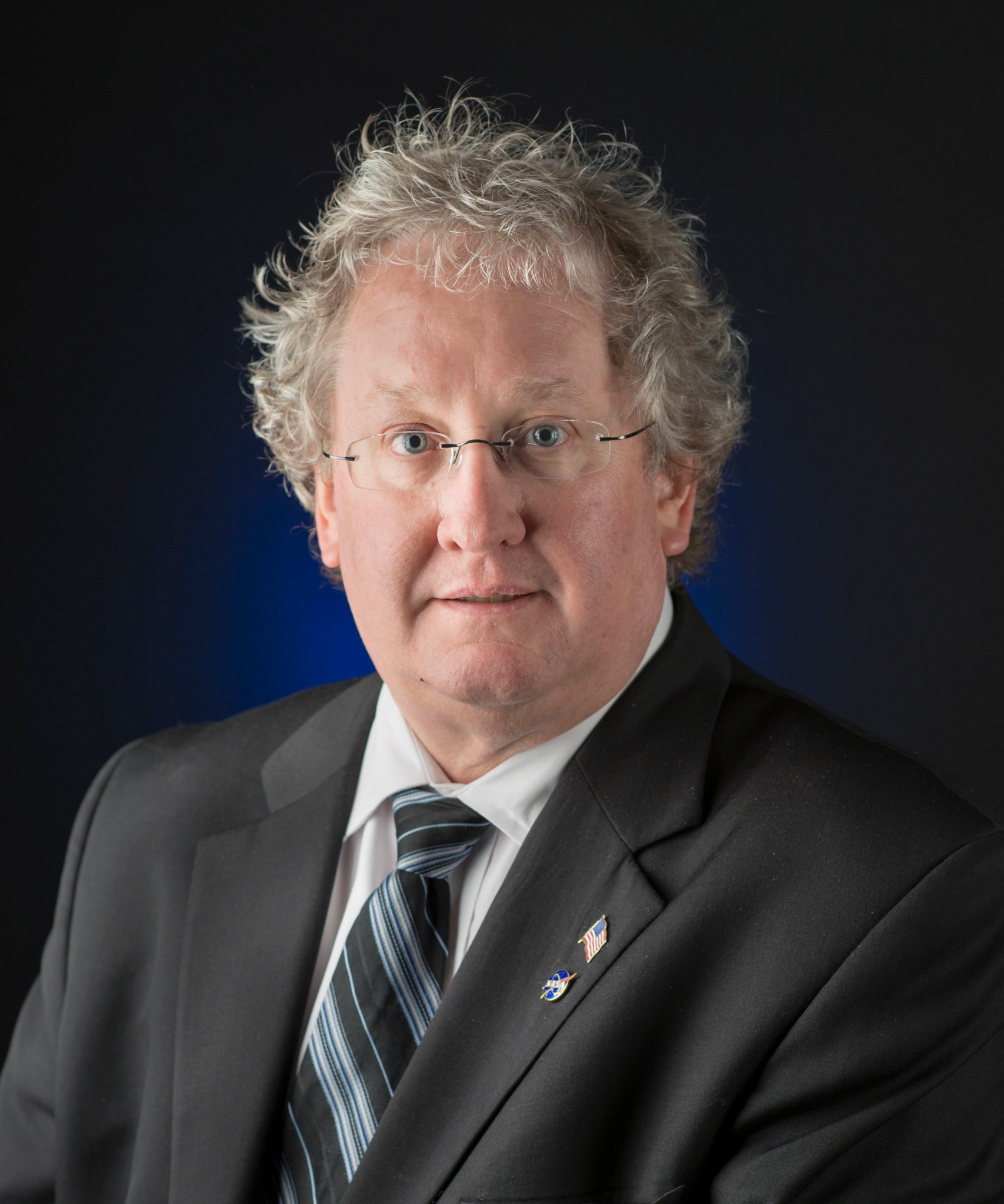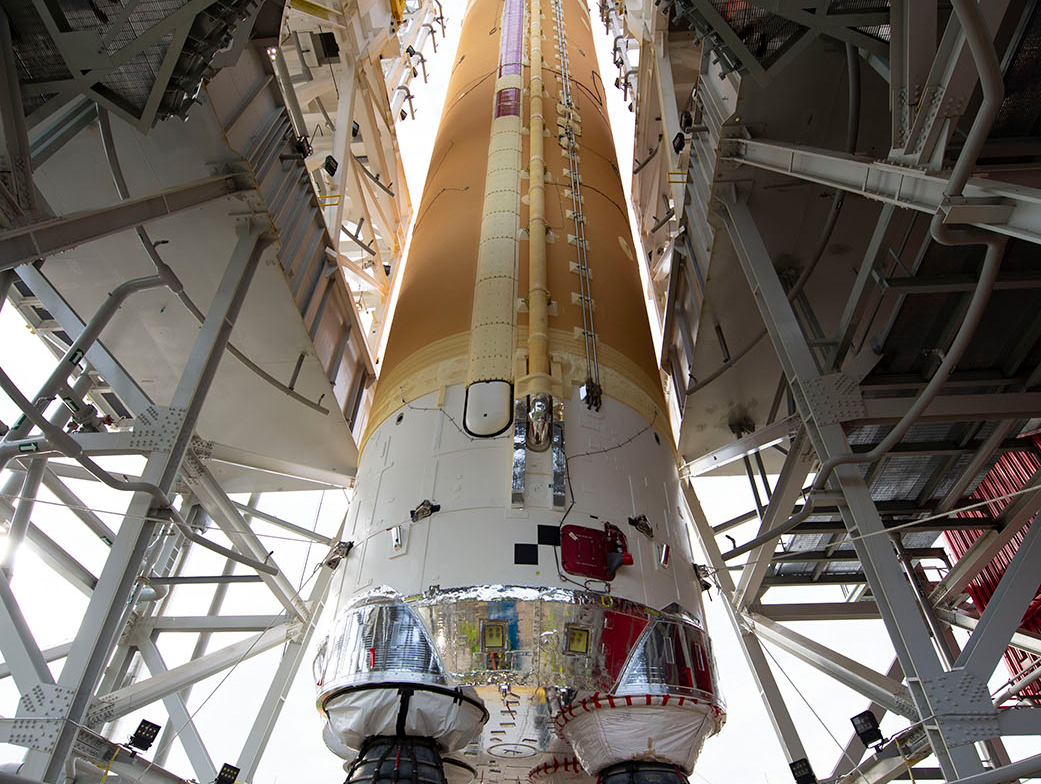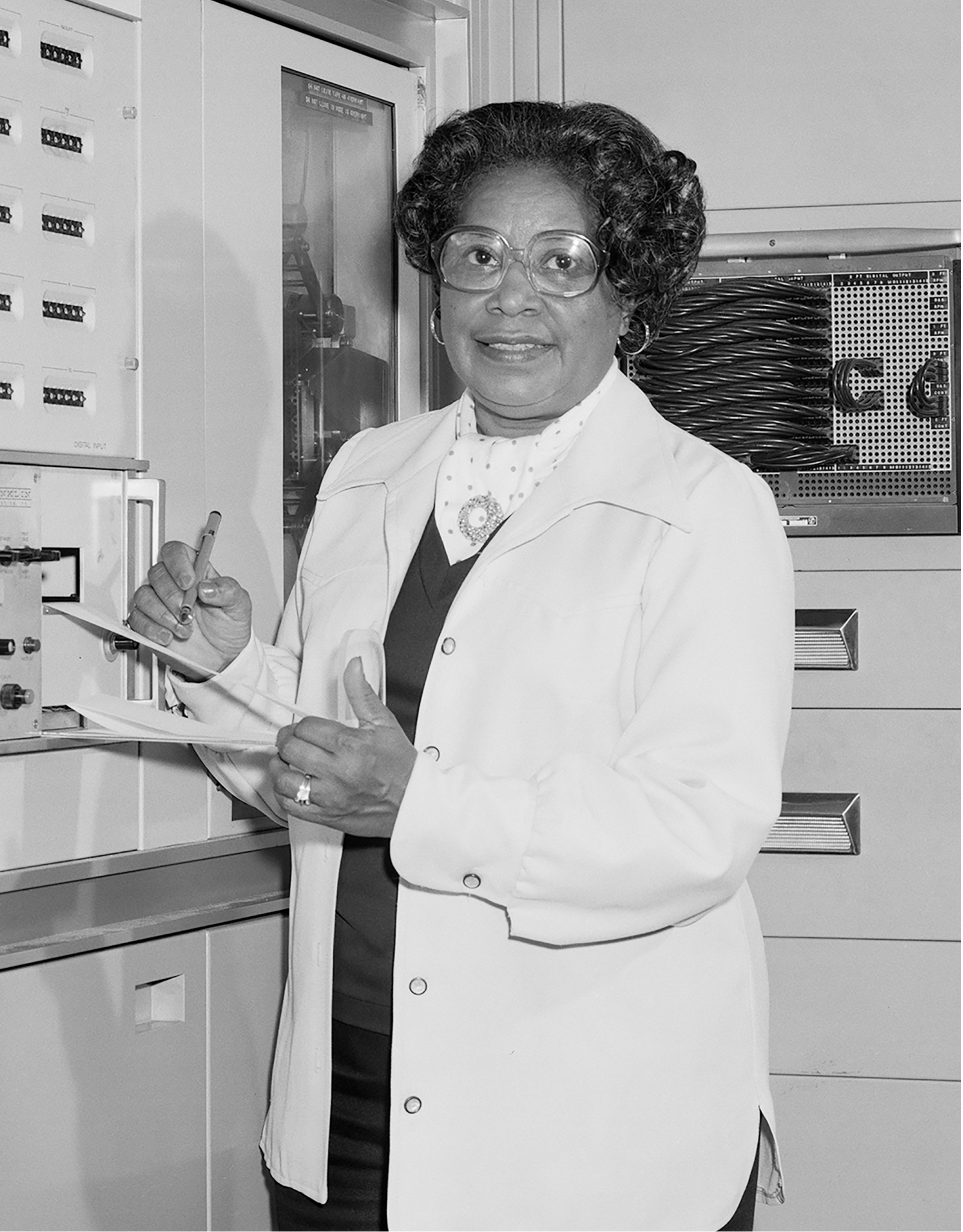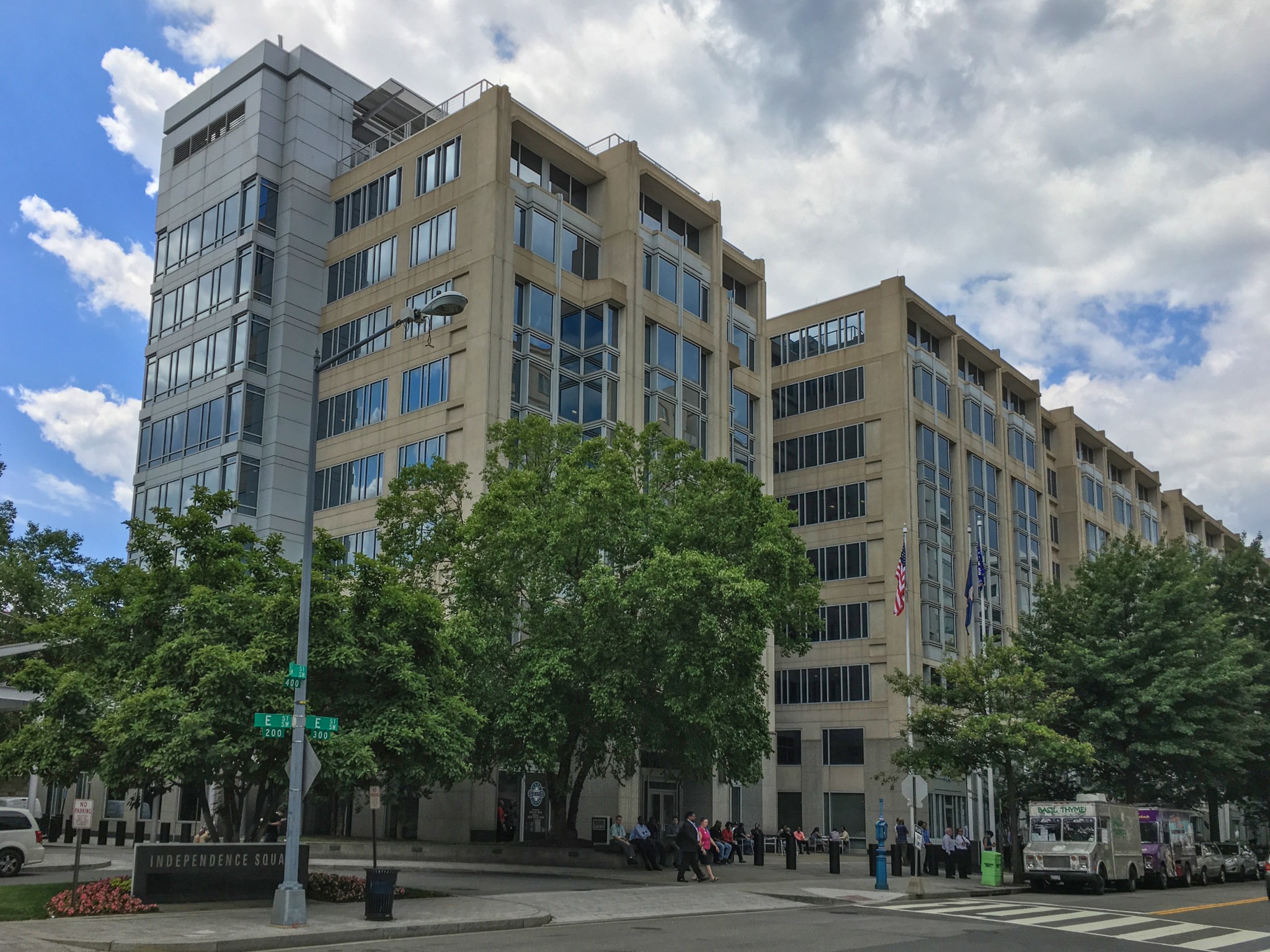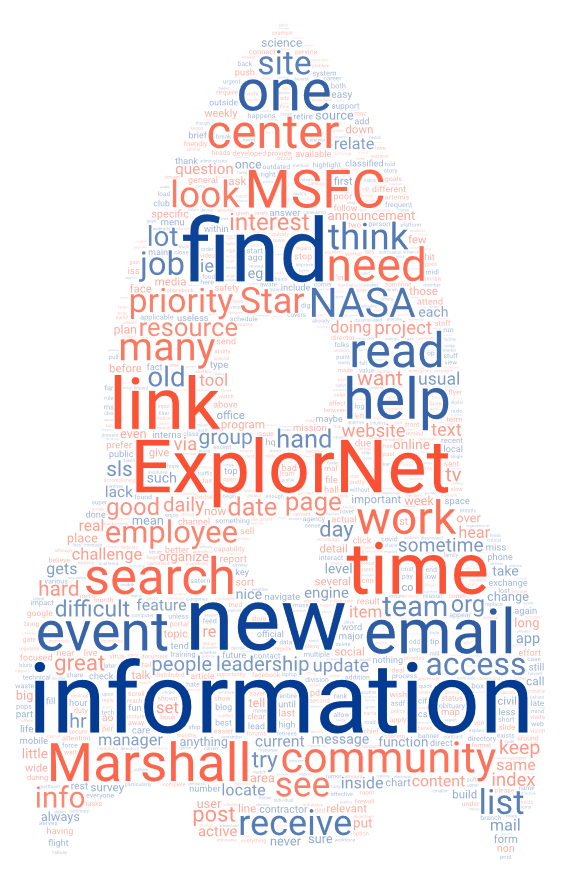In This Week’s Star
- Director’s Corner: Marshall’s 60th Anniversary
- Celebrating 60 Years of Marshall Space Flight Center
- NASA Completes Artemis Space Launch System Structural Testing Campaign
- William Hill Appointed Deputy of Marshall’s Safety & Mission Assurance Directorate
- NASA Plans for More SLS Rocket Boosters to Launch Artemis Moon Missions
- No Small Steps: The Brains of NASA’s SLS Rocket
- NASA Checks Out SLS Core Stage Avionics for Artemis I Mission
- NASA Names Headquarters for ‘Hidden Figure’ Mary Jackson
- Marshall Employee Communications Channels Found Trusted, Reliable, Timely in Recent Survey
- NASA Launches Annual ‘Feds Feed Families’ Food Drive
- This Week in NASA History: Army Ballistic Missile Agency Formally Transferred to Marshall – July 1, 1960
Director’s Corner: Marshall’s 60th Anniversary
As NASA’s Marshall Space Flight Center proudly marks its 60th anniversary, I ask you to join me in remembering everyone who made our center what it is today, and I look forward to all that is still to come because of YOU – the Marshall team.
Much has changed in 60 years, but one thing remains unchanged: Our people will always be the creative driving force behind our achievements.
The women and men of Marshall have enabled and provided critical support for decades of groundbreaking NASA missions. Every mission and project our great center has touched – Saturn, Skylab, Space Shuttle Program, Hubble Space Telescope, Chandra X-ray Observatory, the International Space Station, and the plethora of development programs that have advanced technology programs over the years – led to this point as we embark on a new age of space exploration with the Artemis program. Now more than ever, the nation continues to rely on our expertise in rocket development and space transportation systems to mature technologies needed for deep space exploration.
Over the past six decades, Marshall led America’s space agency on a journey that changed not only our understanding of the universe, but of ourselves. Through programs like the Short-term Prediction Research and Transition Center and SERVIR, our scientists are monitoring how Earth is changing and what the future may hold. Astronomers around the world use Chandra to explore cosmic mysteries – from distant galaxies and an expanding universe to black holes, dark energy, and supernovae. That science doesn’t happen without the people who had a vision and the persistence to make it happen.
And for 20 years, the Marshall workforce has enabled humans to live and work in low-Earth orbit aboard the International Space Station, helping NASA advance knowledge, demonstrate technologies, and make research breakthroughs.
Not long after Marshall was commissioned, President John F. Kennedy challenged us to land on the Moon. It was a time when the entire country rallied around a common goal and triumphed despite overwhelming obstacles. Today, we face far greater challenges – from protecting our planet to protecting one another from a pandemic and working together to create social change. That is why it’s more important than ever that we unite once again to land the first woman and the next man on the surface of the Moon.
In the 1960s, Marshall engineered a path to the Moon with the Saturn V rocket, helping NASA achieve one of humanity’s greatest achievements. With the Space Launch System rocket and Human Landing System, humankind will once again reach those heights. Without your crucial contributions to the Artemis program, there can be no safe, sustainable human exploration of the Moon and Mars.
We celebrate our legacy with great promise – not only what we have done in the past six decades, but what we will do in the next. I’m looking forward to our next breathtaking achievements in space that will fuel our missions and improve life for everyone on the planet.
As we commemorate 60 years of science, exploration and innovation, I want to thank all of you once again for the vital work you do each day in support of the NASA mission. Together, our momentum is charting the next great era of exploration.
Celebrating 60 Years of Marshall Space Flight Center
By Taylor Goodwin
On July 1, 1960, the technical and administrative core of the Army Ballistic Missile Agency became NASA’s Marshall Space Flight Center. The transfer of this experienced group provided the young agency with a solid foundation in propulsion expertise. Sixty years of historic leaps and strides later, Marshall is celebrating its milestone anniversary with a look back at some of its most iconic accomplishments.
“I could not be more proud to be part of the history Marshall has made,” Marshall Director Jody Singer said. “The world has witnessed us achieve 60 consecutive years of discovery, exploration, and victories for all of humankind. Celebrating these achievements reminds us of all the groundbreaking history still to come from the Marshall team.”
In its first decade as a NASA center, Marshall worked on the Mercury-Redstone rocket that carried the country’s first astronaut, Alan Shepard, into space. Propulsion remained a focus area as the team developed the Saturn I, Saturn IB, and the Saturn V rockets for the Apollo Program. Science also formed a considerable part of Marshall’s accomplishments, through the development and launch of three Pegasus satellites and several balloon flights of the 36-inch aperture optical system – Stratoscope II.
The 1970s saw the five final flights of the Apollo Program, including three expeditions via the Marshall-developed Lunar Roving Vehicle – which allowed astronauts to expand the amount of science conducted on the lunar surface – for the Apollo 15, 16, and 17 missions. This second decade also included the United States’ first space station, Skylab, whose three crewed missions provided NASA with critical insight on living and working in space. The end of the decade expanded the center’s role in the development of scientific missions with the Marshall-managed High Energy Astronomy Observatory Program, including the launch of three large low-Earth orbiting satellites known as HEAO 1, 2, and 3.
Marshall’s third decade, the 1980s, saw a continuation in propulsion work for humanity’s first reusable spacecraft, the space shuttle – including the development of the shuttle’s main engines, solid rocket booster, and external tanks. Space shuttle Columbia’s STS-1 mission ushered in three decades of operations in low-Earth orbit through 135 missions, including scientific experiments and payloads. Marshall also built upon its extensive microgravity research capabilities as the team developed systems for the Spacelab program – including the Hubble Space Telescope, which continues to reshape humanity’s view of the universe.
In the 1990s, while continuing work to refine the shuttle propulsion systems, Marshall took a giant leap forward in microgravity with the development and operation of several new research programs known as Astro, the International and U.S. Microgravity Laboratories, and the U.S. Microgravity Payloads. Marshall engineers also explored the limits of propulsion technology through advanced transportation systems. Throughout the decade, Marshall scientists helped rewrite understanding of gamma rays with the Burst and Transient Source Experiment for the Compton Gamma Ray Observatory. The decade culminated with the launch of both the first U.S. module for the International Space Station and the Chandra X-ray Observatory.
The 2000s involved continued development of the space station, space shuttle programs, and propulsion systems – including systems associated with the Ares crewed rocket. Marshall gained even more experience helping astronauts live and work in space with the development of the Destiny Laboratory, which supports a wide range of experiments and studies contributing to the health, safety, and quality of life for people all over the world; the EXPRESS racks, multipurpose payload rack systems that support and store research experiments; and the Microgravity Science Glovebox, which provides a safe, contained environment for research with liquids, combustion, and hazardous materials in microgravity conditions. Marshall continued its role in understanding the universe and fundamental physics with oversight of the Gravity Probe B satellite, Gamma Ray Burst Monitor space telescope, and Hinode satellite.
In the 2010s, the space station continued to serve as both a proving ground for environmental control systems and an exceptional platform for scientific experiments. Marshall built upon a legacy of propulsion excellence with the development of the agency’s most powerful rocket to date, the Space Launch System. This advanced vehicle will launch a new era of human exploration beyond Earth’s orbit to the Moon and later on to Mars through the Artemis program.
“Six decades of Marshall history includes an impressive number of extraordinary achievements in both human spaceflight and scientific discovery,” Marshall Historian Brian Odom said. “Those accomplishments now form the core capability that the center will employ as it continues to make vital contributions to programs like Artemis and the Human Landing System, and a whole range of astrophysics missions. The center has certainly made its mark in the evolution of space exploration, and we still have so much more to contribute.”
As Marshall enters its next decade of operation, the team is leading NASA’s Space Launch System and Human Landing System programs, key elements of Artemis. The team is preparing to return American astronauts to the Moon by 2024 and establish a sustainable human presence on the lunar surface by 2028. Lessons learned on and around the Moon will lead to the next giant leap – sending astronauts to Mars.
For more information on Marshall through the decades, visit here.
Goodwin, an ASRC Federal/Analytical Services employee, supports the Office of Strategic Analysis & Communications.
NASA Completes Artemis Space Launch System Structural Testing Campaign
By Taylor Goodwin
On June 24, engineers at NASA’s Marshall Space Flight Center completed the Space Launch System rocket’s structural testing campaign for the Artemis lunar missions by testing the liquid oxygen structural test article to find its point of failure.
“The Space Launch System and Marshall test team have done a tremendous job of accomplishing this test program, marking a major milestone not only for the SLS Program but also for the Artemis program,” said John Honeycutt, SLS Program manager at Marshall. “From building the test stands, support equipment, and test articles to conducting the tests and analyzing the data, it is remarkable work that will help send astronauts to the Moon.”
For the final test, the liquid oxygen tank test article – measuring 70 feet tall and 28 feet in diameter – was bolted into a massive 185,000-pound steel ring at the base of Marshall’s Test Stand 4697. Hydraulic cylinders were then calibrated and positioned along the tank to apply millions of pounds of crippling force from all sides while engineers measured and recorded the effects of the launch and flight forces. The liquid oxygen tank circumferentially failed in the weld location as engineers predicted and at the approximate load levels expected, proving flight readiness and providing critical data for the tank’s designers. The test concluded at approximately 9 p.m. This final test on the liquid oxygen structural test article met all the program milestones.
The successful completion of SLS structural qualification testing at Marshall wraps up the largest test campaign at the center since tests conducted for the Space Shuttle Program, more than 30 years ago. During the SLS test campaign, five structural test articles underwent 199 separate test cases and more than 421 gigabytes of data were collected to add to computer models used to design the rocket. The final test marks the achievement of all SLS structural testing requirements prior to the Artemis I mission – the first in a series of increasingly complex missions that will enable human exploration to the Moon and Mars.
Earlier this year, NASA and engineers from Boeing, the core stage prime contractor, completed 24 baseline tests that simulated actual flight conditions on the liquid oxygen structural test article. For all the tests, thousands of sensors measured stress, pressure, and temperature while high-speed cameras and microphones sought to identify any buckling or cracking in the tank’s cylindrical wall. The data gathered from this baseline test helped qualify the SLS core stage structures and integrated upper stage for flight.
The Marshall team has been conducting structural qualification testing on the rocket since May 2017 with an integrated test of the upper part of the rocket stacked together – including the interim cryogenic propulsion stage, the Orion spacecraft stage adapter, and the launch vehicle stage adapter. That was followed by testing of the four largest structures that compose the core stage – the engine section, the intertank, the liquid hydrogen tank, and the liquid oxygen tank. Each of these tests provided additional data to computer models that predict how the structures will perform under the harsh conditions of launch and flight.
“The Marshall test lab team has worked closely with the Space Launch System Program to test the rocket’s structures from the top to bottom,” said Ralph Carruth, Marshall’s test lab director. “After watching the test stands being built, working alongside SLS and Boeing engineers to establish testing procedures, and conducting and gathering results of five structural qualifying tests, we are proud to contribute data that shows these structures can withstand the rigors of flight.”
With the conclusion of testing, designers now have data that may be helpful in optimizing SLS hardware. SLS will have the power to send astronauts forward to the Moon and ultimately to Mars. Testing the new, complex pieces of hardware is critical to the success not only of the first flight test of SLS and Orion, but also to all future missions.
“This year is a landmark year for core stage testing for the Artemis missions,” said Julie Bassler, SLS stages manager. “We have successfully completed our core stage major structural tests at Marshall and are making progress on Green Run testing of the Artemis I core stage at NASA’s Stennis Space Center that will simulate launch. All these tests are not only valuable for the first Artemis mission but also validate the new integrated design of the SLS core stage structure, propulsion, and avionics systems and ensure its readiness for future flights.”
The SLS rocket, Orion, Gateway, and human landing system are part of NASA’s backbone for deep space exploration. The Artemis program is the next step in human space exploration. It’s part of America’s broader Moon to Mars exploration approach, in which astronauts will explore the Moon and experience gained there to enable humanity’s next giant leap – sending humans to Mars.
Goodwin, an ASRC Federal/Analytical Services employee, supports the Office of Strategic Analysis & Communications.
William Hill Appointed Deputy of Marshall’s Safety & Mission Assurance Directorate
William Hill has been appointed deputy director of the Safety & Mission Assurance Directorate at NASA’s Marshall Space Flight Center. He will assume the role effective July 5 following the retirement June 30 of Pete Allen, who has held the post since 2016.
The organization develops and oversees safety planning, procedures, and response across Marshall and its partner facilities, laboratories, test stands, and proving grounds, seeking to ensure mission success by protecting all team members, processes, facilities, and hardware.
Joining Marshall in 2019, Hill was director for advanced technology in the Science and Technology Office. From 2014-2019, he was deputy associate administrator for Exploration Systems Development at NASA Headquarters, providing executive leadership and program direction for development of the Space Launch System, Orion crew vehicle, Exploration Ground Systems programs, and overall systems integration.
From 2005-2016, Hill was assistant associate administrator for the space shuttle in the Space Operations Mission Directorate, where he safely executed the last 21 flight missions of the Space Shuttle Program through final assembly of the International Space Station and the final Hubble Space Telescope servicing mission.
Hill joined the Space Shuttle Office at NASA Headquarters in 2002 as a senior integration manager. He led Return to Flight activities following the 2003 loss of space shuttle Columbia, including directing response and recovery activities and leading the preparation of NASA’s response to the findings and recommendations of the Columbia Accident Investigation Board. He also was the lead safety manager for space shuttle operations in Headquarters’ Office of Safety and Mission Assurance.
Hill earned a bachelor’s degree in mechanical engineering in 1979 from West Virginia University Institute of Technology, then in Montgomery, and a master’s degree in business administration and management in 1996 from Frostburg State University in Frostburg, Maryland. He is a recipient of the Presidential Rank Award for Meritorious Service, a NASA Exceptional Service Medal, the Space Flight Awareness Silver Snoopy award, and numerous other agency awards.
NASA Plans for More SLS Rocket Boosters to Launch Artemis Moon Missions
NASA has taken the next steps toward building Space Launch System solid rocket boosters to support as many as six additional flights, for a total of up to nine Artemis missions. The agency is continuing to work with Northrop Grumman of Brigham City, Utah, the current lead contractor for the solid rocket boosters that will launch the first three Artemis missions, including the mission that will land the first woman and next man on the Moon in 2024.
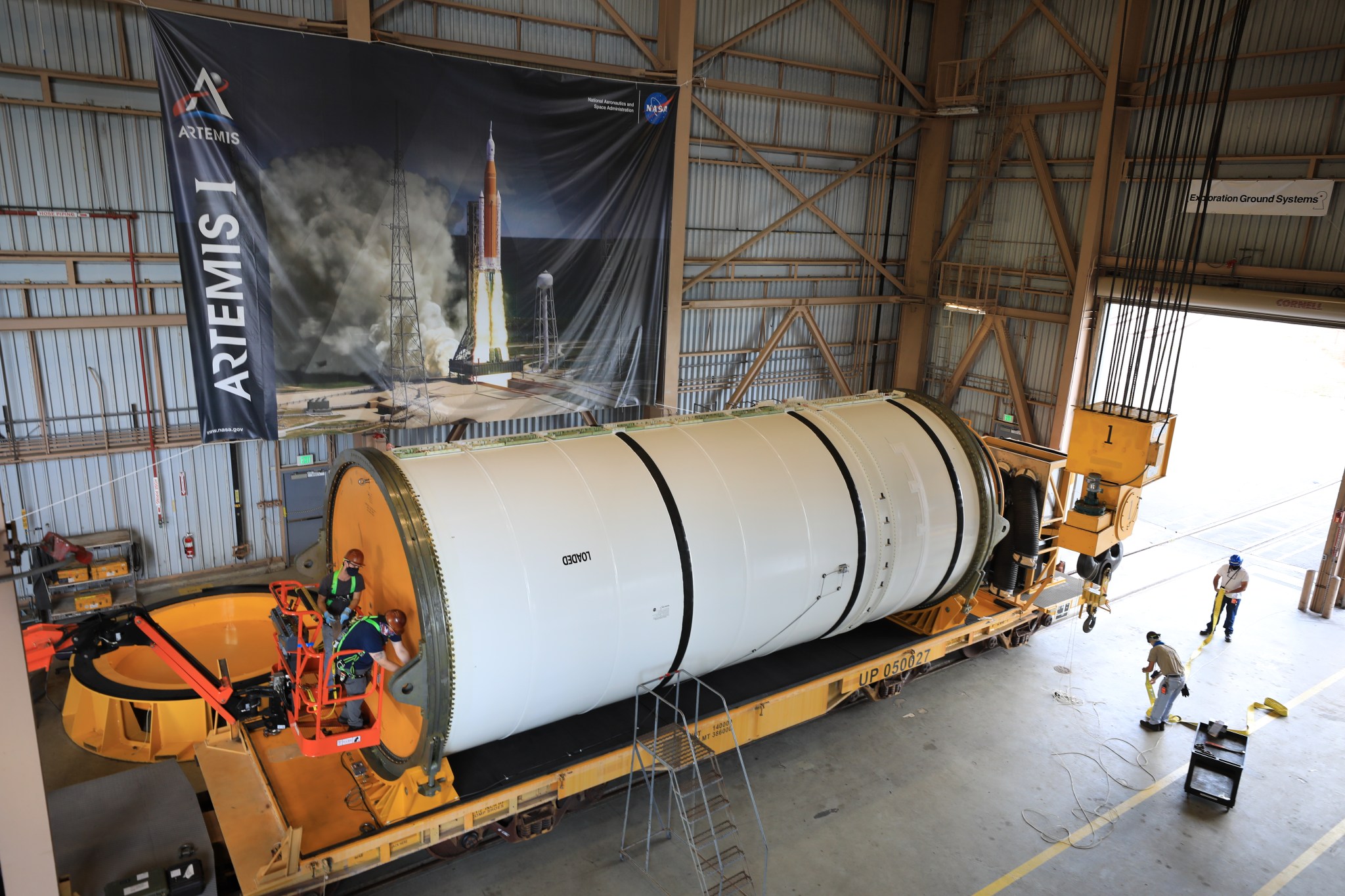
Under this letter contract, with a potential value of $49.5 million, NASA will provide initial funding and authorization to Northrop Grumman to order long-lead items to support building the twin boosters for the next six SLS flights. Northrop Grumman will be able to make purchases as the details of the full contract are finalized within the next year. The full Boosters Production and Operations Contract is expected to support booster production and operations for SLS flights four through nine. The period of performance for the letter contract is 150 days; the definitized contract will extend through Dec. 31, 2030.
“This initial step ensures that NASA can build the boosters needed for future Space Launch System rockets that will be needed for the Artemis missions to explore the Moon,” said John Honeycutt, SLS Program manager at NASA’s Marshall Space Flight Center. “The letter contract allows us to buy long-lead materials in time for manufacturing boosters for the fourth flight.”
The twin solid rocket boosters are mounted on either side of the SLS rocket’s core stage. The boosters produce more than 75% of the thrust for each SLS launch. The boosters were based on the design of the space shuttle solid rocket boosters but include a fifth segment to produce the extra power needed to send the larger SLS rocket to space.
“We’re ready to process and stack the boosters for the Artemis I mission, and we are making great progress producing boosters for the Artemis II and III missions,” said Bruce Tiller, manager of the SLS Boosters Office at Marshall. “NASA is committed to establishing a sustainable presence at the Moon, and this action enables NASA to have boosters ready when needed for future missions.”
Northrop Grumman recently delivered the 10 solid rocket booster segments for Artemis I to NASA’s Kennedy Space Center. The booster segments will be stacked with other booster components outfitted at Kennedy and readied for launch.
No Small Steps: The Brains of NASA’s SLS Rocket
In this episode of No Small Steps, host Stephen Granade takes you inside the Systems Integration Lab at NASA’s Marshall Space Flight Center for a close-up look at the brains of NASA’s powerful Space Launch System rocket. Inside the lab, the SLS team has flight computers and avionics that replicate those inside the rocket’s core stage and solid rocket boosters. This lab allows them to test these systems with the flight software. The SLS rocket produces more than 8.8 million pounds of thrust power to launch NASA’s Artemis missions to the Moon. The SLS rocket’s avionics systems and flight computers harness that power to steer, track, and guide the rocket on its journey to the Moon. For more on SLS, visit here. (NASA)
NASA Checks Out SLS Core Stage Avionics for Artemis I Mission
The flight computers and avionics of NASA’s Space Launch System’s core stage for the first Artemis mission were powered on earlier this week and have completed a thorough systems checkout. The test used Green Run software that was developed for the test and loaded in the flight computers for the first time. The SLS avionics power on and checkout was the second of eight tests in the Green Run test series at NASA’s Stennis Space Center, where the core stage is installed in the B-2 Test Stand. The test steadily brought the core stage flight hardware, which controls the rocket’s first eight minutes of flight, to life for the first time. The three flight computers and avionics systems are located in the forward skirt at the top section of the rocket stage and distributed in the core stage’s intertank and engine section. Engineers from NASA and Boeing, the core stage prime contractor, worked in control rooms at Stennis as the avionic systems inside the Artemis I core stage were checked out. While this is the first time the Green Run software was used to control all the avionics in the in the flight core stage, engineers previously qualified the avionics and flight computers with tests in the Systems Integration and Test Facility at NASA’s Marshall Space Flight Center. (NASA)
NASA Names Headquarters for ‘Hidden Figure’ Mary Jackson
NASA’s headquarters building in Washington has been named after Mary W. Jackson, the agency’s first African American female engineer. NASA Administrator Jim Bridenstine announced the official change June 24.
Jackson, a mathematician and aerospace engineer, started her career in the segregated West Area Computing Unit of NASA’s Langley Research Center. Jackson went on to lead programs influencing the hiring and promotion of women in NASA’s science, technology, engineering, and mathematics careers. In 2019, she was posthumously awarded the Congressional Gold Medal.
“Mary W. Jackson was part of a group of very important women who helped NASA succeed in getting American astronauts into space,” Bridenstine said. “Mary never accepted the status quo. She helped break barriers and open opportunities for African Americans and women in the field of engineering and technology.
“Today, we proudly announce the Mary W. Jackson NASA Headquarters building,” he added. “It appropriately sits on Hidden Figures Way, a reminder that Mary is one of many incredible and talented professionals in NASA’s history who contributed to this agency’s success. Hidden no more, we will continue to recognize the contributions of women, African Americans, and people of all backgrounds who have made NASA’s successful history of exploration possible.”
The work of the West Area Computing Unit caught widespread national attention in the 2016 Margot Lee Shetterly book, “Hidden Figures: The American Dream and the Untold Story of the Black Women Mathematicians Who Helped Win the Space Race.” The book was made into a popular movie that same year and Jackson’s character was played by award-winning singer-actor Janelle Monáe.
The portion of E Street Southwest in front of NASA Headquarters was renamed Hidden Figures Way in 2019, the result of a bipartisan bill in Congress.
“We are honored that NASA continues to celebrate the legacy of our mother and grandmother, Mary W. Jackson,” said Carolyn Lewis, Jackson’s daughter. “She was a scientist, humanitarian, wife, mother, and trailblazer who paved the way for thousands of others to succeed, not only at NASA, but throughout this nation.”
Jackson, a native of Hampton, Virginia, graduated from Hampton Institute in 1942 with a dual degree in math and physical sciences. She initially taught math in Calvert County, Maryland, then went on to work as a bookkeeper, marry Levi Jackson and start a family, and work as a U.S. Army secretary before her aerospace career took off.
In 1951, she was recruited by the National Advisory Committee for Aeronautics, which in 1958 was succeeded by NASA. She started as a research mathematician who became known as one of the human computers at Langley. She worked under fellow “Hidden Figure” Dorothy Vaughan in the segregated West Area Computing Unit.
After two years in the computing pool, Jackson was tapped to work in Langley’s Supersonic Pressure Tunnel, a 60,000 horsepower wind tunnel capable of blasting models with winds approaching twice the speed of sound. Her supervisor eventually suggested she enter a training program to pursue a promotion from mathematician to engineer. Because the classes were held at then-segregated Hampton High School, Jackson needed special permission to join her white peers in the classroom.
Jackson earned the promotion and in 1958 became NASA’s first Black female engineer. For nearly two decades, she authored or co-authored numerous research reports, most focused on the behavior of the boundary layer of air around airplanes. In 1979, she joined Langley’s Federal Women’s Program, where she worked to address the hiring and promotion of the next generation of female mathematicians, engineers, and scientists. She retired from Langley in 1985.
In 2019, President Donald Trump signed the Hidden Figures Congressional Gold Medal Act that posthumously awarded the honor to Jackson – who died in 2005 – and her Hidden Figures colleagues Katherine Johnson, Dorothy Vaughan, and Christine Darden.
“NASA facilities across the country are named after people who dedicated their lives to push the frontiers of the aerospace industry,” Bridenstine said. “Over the years NASA has worked to honor these Hidden Figures in various ways, including naming facilities, renaming streets, and celebrating their legacy. NASA is dedicated to advancing diversity, and we will continue to take steps to do so.”
Learn more about Jackson, the Hidden Figures, and today’s Modern Figures here.
Marshall Employee Communications Channels Found Trusted, Reliable, Timely in Recent Survey
By Taylor Goodwin
The Office of Strategic Analysis & Communications at NASA’s Marshall Space Flight Center recently conducted a survey in which the workforce reported employee communication channels to be trusted, reliable, and timely – while also identifying some areas for improvement.
“After analyzing the survey results, the team will prioritize improving Inside Marshall, building from what employees already consider reliable and timely, and encouraging leaders to continue to remember the importance of personal communications to deliver information,” said June Malone, manager of Marshall’s Office of Communications.
Developed by Marshall’s Office of Communications with input from the Office of the Chief Information Officer, Office of Human Resources and cross-center focus groups, the survey was deployed from March 2 to March 20 – garnering responses from employees both before and after the center entered mandatory telework in an effort to prevent the spread of COVID-19.
The survey, which captured over 900 responses, included 20 questions aimed to analyze the current state of employee communications and identify what would benefit the Marshall workforce moving forward.
Employees reported difficulty in accessing information outside of the firewall due to restricted access to NASA email accounts and ExplorNet. However, while inside the firewall, 97% of employees responded that information is delivered in a timely and useful manner – the majority receiving news through centerwide messaging and in-person communication.
Weekly messages are preferred by four out of five generational groups – Generation Z, born 1997 or later; millennials, born from 1977 to 1995; Generation X, born 1965 to 1976; and baby boomers, born 1946 to 1964 – at Marshall, with 59% of respondents favoring weekly emails as a primary form of communication. Respondents belonging to the traditionalist generation – born 1945 or before – preferred daily messages. In addition, 43% of respondents said they rely on in-person communications from supervisors or staff meetings while 33% receive news from ExplorNet.
Inside Marshall – the employee communications news hub on ExplorNet – was viewed by users daily at 36%, weekly at 26%, monthly at 5%, and infrequently at 33%. Users found the platform helpful while using the A-Z index of Marshall’s online resources, banners, and people and group sites. Users also reported difficulty in navigating the site, using the search engine and identifying out-of-date information.
The survey showed that the Marshall Star successfully engages and retains its readership, with 74% of respondents saying that they read the publication. Star readers responding to the survey ranked mission milestones as the most important topic covered in the weekly newsletter, followed by center events and technology. “People stories” – a combination of human interest stories and team member profiles – remained popular as well.
At 85%, a substantial majority of employees indicated feeling connected to Marshall’s leadership priorities. The opposing 15% of respondents credited their disconnect to several issues – including organizational cultural differences, access barriers for off-site employees, and a lack of understanding of how some roles and functions are connected to leadership priorities.
Feedback from survey respondents to the communications team included employees suggesting adopting new technology, repurposing existing technology, reducing some information distribution to avoid overload, improving in-person communication efforts through center leaders, and improving Marshall’s intranet.
“As communicators, it’s critical that we not only provide information, but seek out accept feedback from the Marshall team,” Malone said. “We are always looking for ways to improve communication with the workforce. An important step in that process is listening to how we can improve our content and delivery methods.”
A number of these progressive efforts are already in motion, including the transition of Marshall’s intranet from ExplorNet to Office 365. Marshall’s Office of Strategic Analysis & Communications and the Office of the Chief Information Officer announced the migration in May and plan to launch the new platform this fall.
Inside Marshall will remain the primary location for center news and information on the updated intranet. The site will include increased search functionality, a more user-friendly interface, and the latest center information.
“We’re excited to give the workforce an upgraded platform that will provide them with the news, information, and content they need to maintain connections and communications across the center,” said Brian Powell, supervisor of the Workforce Enabling Applications in the Agency Applications Office at Marshall.
All ExplorNet users have access to assistance in transitioning their organizational or personal content to Office 365 Instructions on transitioning, more information on the new platform, and answers to frequently asked questions can be found on the ExplorNet Migration page.
“As we implement these changes, we encourage all feedback,” Malone said. “Our priority is always delivering information to the Marshall team in the best way possible and meeting the needs of the workforce.”
Goodwin, an ASRC Federal/Analytical Services employee, supports the Office of Strategic Analysis & Communications.
NASA Launches Annual ‘Feds Feed Families’ Food Drive
By Rick Smith
NASA has launched its annual “Feds Feed Families” food drive, the voluntary agency wide campaign inviting NASA civil service employees and contractors to collect and donate food for those most in need.
This year’s campaign, which runs through July 31, seeks to raise funds and amass donated goods totaling 150,000 pounds of food. With social distancing measures in place in Huntsville and across the country, the campaign emphasizes online donations. NASA also encourages workers to donate year-round to maintain available supplies.
Team members and their families may contribute to participating food banks and pantries in the following ways:
- Make a monetary donation to a food bank or pantry through the Combined Federal Campaign. Record your donation no later than July 31.
- Drop off donated items at your local food bank or pantry, or purchase food via an online grocer and have it delivered to a pantry. Find a food bank or pantry near you here.
- Plant an extra row of vegetables or fruit in your garden or harvest unwanted produce from neighborhood gardens to donate to local food banks or pantries.
NASA’s Marshall Space Flight Center team members are encouraged to learn more at the Feds Feed Families Hub, a one-stop campaign information site where participants can record and track their donations and find resources to share with others.
Since the campaign began in 2009, federal workers and their contractor partners have amassed more than 92 million pounds of nonperishable food items to support families at risk of hunger across America.
In next week’s Marshall Star, Marshall’s Feds Feed Families campaign lead, engineer technician Alexander Rawleigh of the Engineering Directorate, will discuss the center’s history of successful giving to the campaign, and how team members can step up and support those in need during this difficult season.
Smith, an ASRC Federal/Analytical Services employee, supports the Office of Strategic Analysis & Communications.
This Week in NASA History: Army Ballistic Missile Agency Formally Transferred to Marshall – July 1, 1960
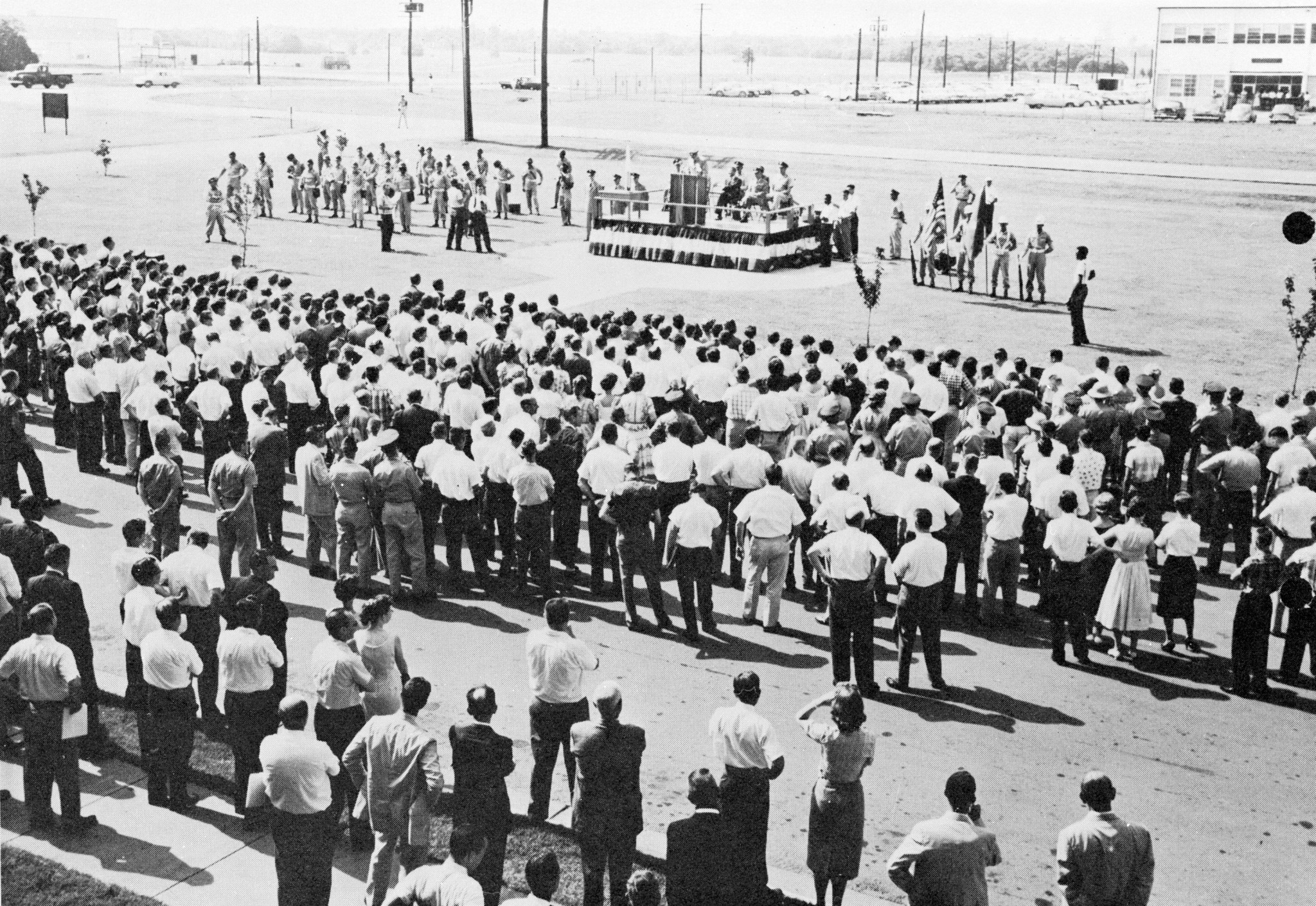
This week in 1960, the Army Ballistic Missile Agency was officially transferred to NASA’s Marshall Space Flight Center. The transfer ceremony was performed in front of the Army Ballistic Missile Agency-Marshall joint headquarters, Building 4488, on Redstone Arsenal. The transfer brought with it a decade of propulsion experience developing a wide range of rockets. The NASA History Program is responsible for generating, disseminating, and preserving NASA’s remarkable history and providing a comprehensive understanding of the institutional, cultural, social, political, economic, technological and scientific aspects of NASA’s activities in aeronautics and space. For more pictures like this one and to connect to NASA’s history, visit the Marshall History Program’s webpage. (NASA)

























